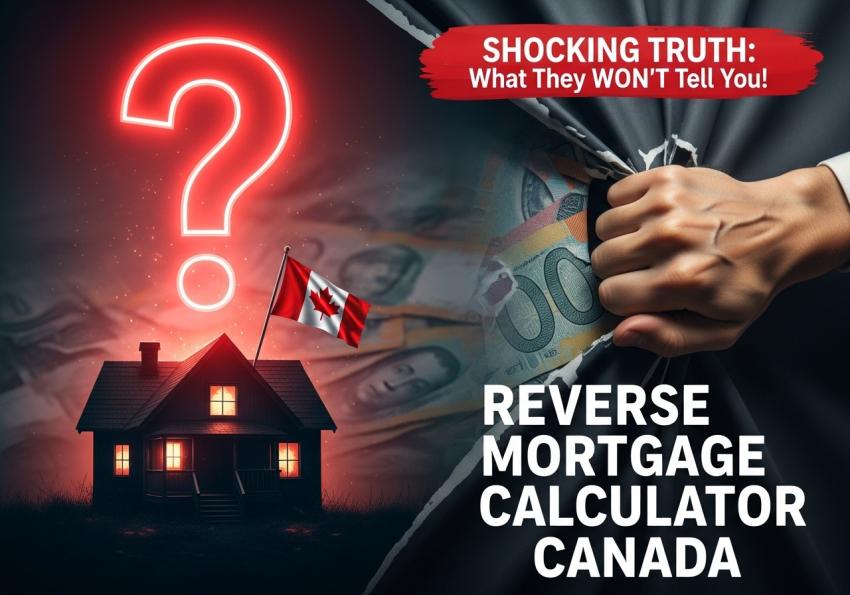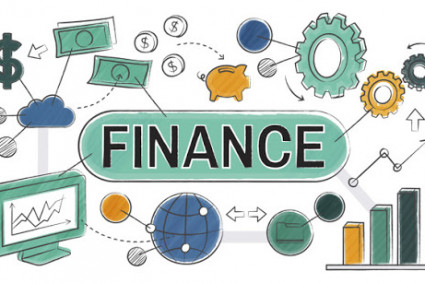
Introduction: The "Magic Number" Every Senior Homeowner Wants
If you're a Canadian homeowner over 55, you're likely sitting on a significant nest egg: your home equity. But in a world of rising costs, that equity is locked up tight. This "house-rich, cash-poor" feeling is stressful, and it’s why so many Canadians start searching for a reverse mortgage calculator in Canada.
You're looking for that "magic number." How much cash can you actually get?
A calculator seems like a simple tool: you put in a few details, and it spits out an answer. But as a guest expert who has spent years in the financial tech space, I can tell you that the calculator is just the tip of the iceberg.
It's a fantastic starting point, but it's not the whole story. To use it properly, you need to understand what's happening behind the curtain. This guide will walk you through what a reverse mortgage calculator is really doing, the factors it weighs, and the critical information it leaves out.
What is a Reverse Mortgage Calculator, Anyway?
First, let's be clear: a reverse mortgage calculator in Canada is a qualification tool, not a final loan offer.
Its main job is to answer one question: "What is the maximum amount I am eligible to borrow?"
Providers like HomeEquity Bank (the provider of the CHIP Home Income Plan) and a few other lenders offer these tools on their websites. They are designed to give you an instant, automated estimate to see if you even qualify before you spend time on a full application.
The calculation itself is based on a complex actuarial model, but it boils down to three simple inputs that you, the homeowner, must provide.
The 3 Key Numbers That Feed the Calculator
When you use a reverse mortgage calculator, you're essentially providing the raw data for its formula. Here’s what matters most.
1. Your Age (and Your Spouse's)
This is the single most important factor. A reverse mortgage is a "lifetime" product, meaning the lender is paid back when you (and your spouse) permanently leave the home. The older you are, the more money you can access.
Why? The lender has a shorter time horizon to wait for repayment and for interest to accrue.
The Rule: A 75-year-old homeowner will be eligible to borrow a significantly higher percentage of their home's value than a 55-year-old. All major Canadian calculators require you and your spouse (if applicable) to be at least 55.
2. Your Home's Appraised Value
The calculator will ask you for an "estimated home value." Be honest with yourself here. While it's tempting to put in your dream number, the final loan amount will be based on a formal appraisal ordered by the lender.
What it is: A professional appraiser will physically (or digitally) assess your home's condition, size, and location to determine its fair market value.
The Rule: You can typically borrow up to 55% of your home's appraised value. The calculator runs its math based on the number you provide, so a more realistic estimate gives you a more realistic result.
3. Your Home's Location
Where you live in Canada matters—a lot. A calculator's formula is weighted by location.
Why? Lenders feel "safer" lending against a home in a high-demand, stable urban market (like Toronto, Vancouver, or Calgary) than a home in a remote, rural area with a small population.
The Rule: A home in a major urban center will often be eligible for a higher percentage (a higher loan-to-value ratio) than a home in a very rural community, even if they have the same appraised value.
The Hidden Side: What a Reverse Mortgage Calculator in Canada Doesn't Tell You
This is the most important part of this entire article. The calculator is a sales tool. It's designed to show you the "good news" (how much cash you can get). It intentionally hides the "bad news"—the costs.
A calculator will NOT show you:
1. The Higher Interest Rate
Reverse mortgage interest rates are always higher than the rates for a traditional mortgage or HELOC. This isn't a scam; it's the price you pay for the "no monthly payments" feature. The lender is taking on more risk and has to wait years (or decades) to be repaid, so they charge a premium.
2. The Power of Compounding Interest
This is the one concept you must understand. Since you're not making monthly payments, the interest you're charged each month gets added back onto the loan principal. The next month, you're charged interest on the new, higher balance.
Here’s a simple example:
You borrow $100,000.
Your interest rate is 8% (compounded).
After Year 1: You owe ~$108,000.
After Year 10: You don't owe $180,000. You actually owe ~$215,900.
After Year 20: You owe ~$466,100.
The calculator never shows you this projection. It only shows the fun part at the beginning.
3. The Setup & Closing Costs
You can't get a reverse mortgage for free. You have to pay for:
The Home Appraisal: ($400 - $700+)
Independent Legal Advice: (Mandatory in Canada, $500 - $1,000+)
Lender & Closing Fees: ($1,500 - $3,000+)
These fees (often $2,500 - $4,500+) are usually just rolled into the loan, but it's money you're borrowing and paying interest on from day one.
The "Trust" Factor: Is the Calculator Secure?
Before you type your address, age, and home value into a random online tool, I want you to pause and think like a digital expert. You are providing highly sensitive personal and financial data.
In 2026, a company's professionalism is reflected in its digital presence.
Does the calculator look like it was built in 1999? Is the site secure (does it have the "https" padlock)? A clunky, insecure, or poorly designed tool is a massive red flag.
Reputable financial institutions invest heavily in [professional web development] to ensure their tools are secure, fast, and protect your data.
When you move from the "calculator" step to the "application" step, how are your documents handled? The best lenders use secure, encrypted client portals or [custom digital platforms] to manage your application, not just generic email.
Your financial security is paramount. Only use tools from established, reputable Canadian lenders who clearly invest in their digital security.
Conclusion: A Tool for Estimation, Not a Final Answer
A reverse mortgage calculator in Canada is an excellent starting point. It’s a 5-minute tool that can help you answer the basic question: "Am I even in the ballpark?"
It is not a financial plan.
Use the calculator to get your estimate. But before you make a single move, take that estimate and call an independent financial planner and a mortgage broker. Ask them to build a projection showing what that loan will really cost you (and your estate) over the next 10, 15, and 20 years.
That is the "magic number" that truly matters.




